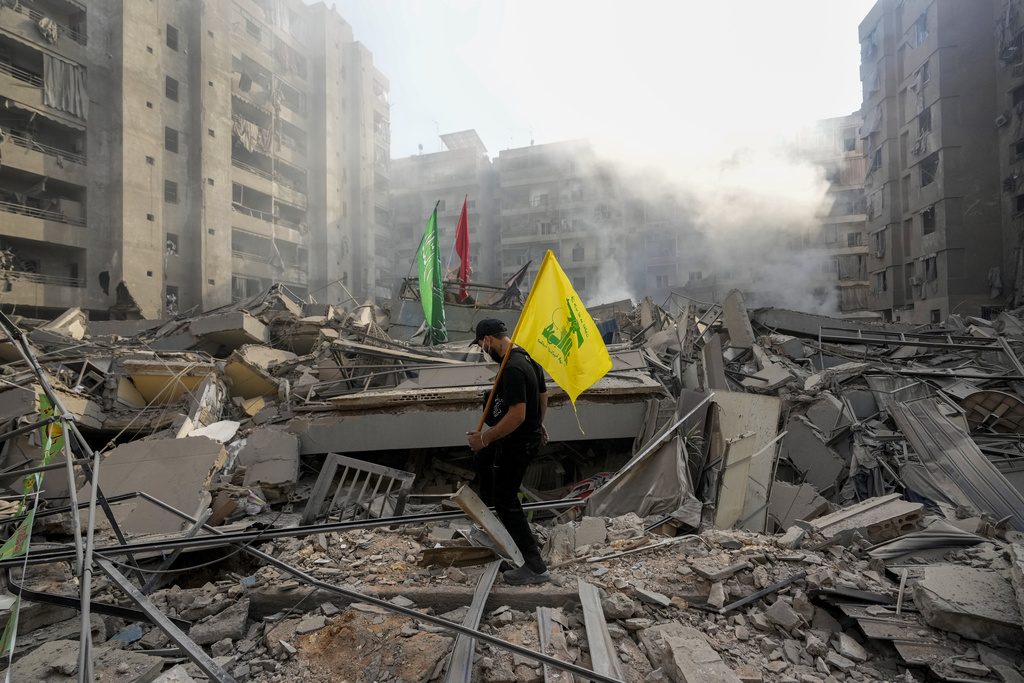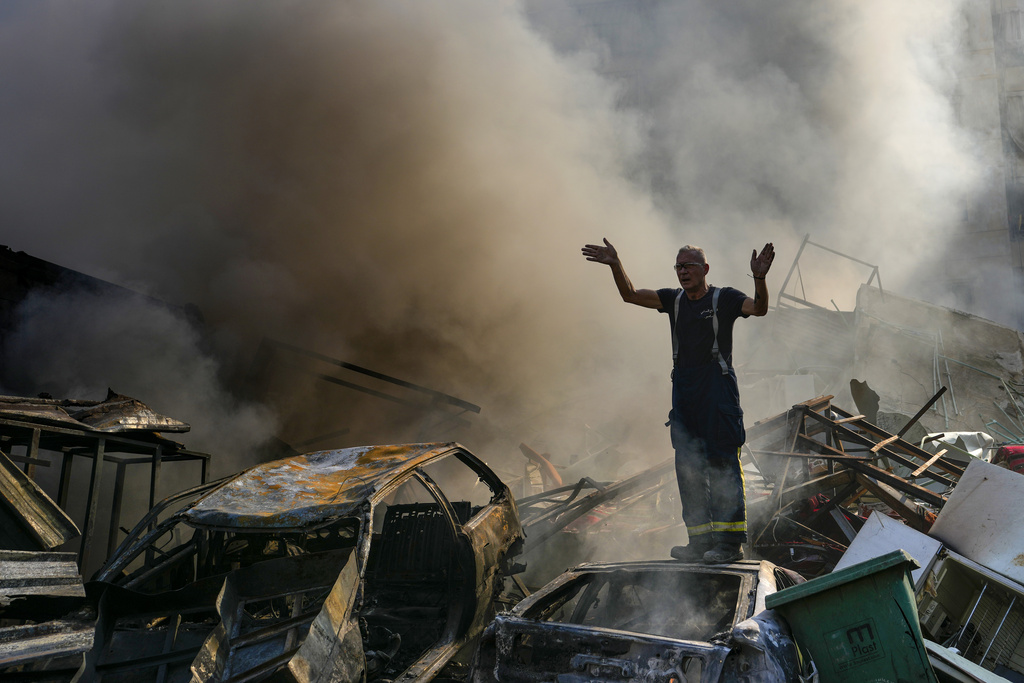Israeli Airstrikes in Lebanon Intensify, Killing 52 and Injuring 72 \ Newslooks \ Washington DC \ Mary Sidiqi \ Evening Edition \ Rescuers are searching for survivors after Israeli airstrikes killed 52 and wounded 72 across northeastern Lebanon, striking villages largely spared in previous attacks. The strikes align with Israel’s intensified campaign against Hezbollah, despite mounting international calls for a cease-fire. The rising toll underscores the broader regional toll from ongoing conflicts with both Hezbollah in Lebanon and Hamas in Gaza.

Expanded Israeli Airstrikes in Lebanon: Quick Looks
- Casualties Mount: The Lebanese Health Ministry confirmed that Israeli airstrikes killed 52 people and wounded 72, primarily in northeastern rural areas.
- Areas Affected: Strikes devastated multiple villages, with four casualties reported in Ollak in the Bekaa Valley, a Hezbollah stronghold, displacing tens of thousands.
- Strikes in Beirut’s Dahiyeh: Israel’s intensified airstrikes included the Beirut suburb of Dahiyeh, though many residents evacuated before the assault.
- UN Calls for Cease-Fire: Humanitarian agencies warned of catastrophic conditions in Gaza and Lebanon, calling for an immediate end to hostilities.
- Drone Attacks from Iraq: Iranian-aligned militia drones targeting Israel from Iraq have risen, heightening regional tensions and security concerns.
Deep Look
In response to these developments, the Lebanese Ministry of Health and local authorities mobilized search and rescue teams, who worked around the clock to retrieve survivors from the rubble. Bachir Khodr, the governor of Baalbek, confirmed that airstrikes targeted nine villages across Lebanon’s northeast, intensifying the plight of communities that were once removed from the heaviest airstrikes. These attacks have displaced tens of thousands of residents, who are now forced to seek shelter in safer towns, further stretching Lebanon’s limited resources amid the broader regional crisis.
In Beirut, Israeli warplanes targeted Hezbollah’s stronghold in the Dahiyeh district. The series of airstrikes overnight demolished dozens of buildings in this southern suburb of the city. However, the majority of Dahiyeh’s residents had evacuated, which spared additional loss of life. With Beirut itself experiencing intensified military action, humanitarian organizations are increasingly concerned about the humanitarian fallout of expanded Israeli operations in Lebanon. Reports indicate that the U.N. and international community are renewing calls for an immediate cease-fire in Lebanon and Gaza to protect civilians and reduce the impact of prolonged conflict on both sides of the border.
The ongoing crisis in Gaza is escalating simultaneously. The Palestinian Health Ministry estimates that over 43,000 Palestinians have been killed since the war began. While these figures include both combatants and civilians, many of the casualties are believed to be civilians trapped in areas with limited access to essential supplies. This war initially broke out following a surprise Hamas-led incursion into Israel on October 7, 2023, during which militants killed roughly 1,200 Israeli civilians and captured over 250 individuals. Since then, Israel has responded with an intensified military campaign, heavily bombarding Gaza, and cutting off critical humanitarian aid.
Adding to the region’s tensions, Israeli defense forces have faced repeated drone attacks launched from Iraq by Iranian-backed militia groups. According to sources within the U.S. defense and regional security sectors, Iranian-aligned militias have launched around five drones daily from Iraq toward Israel, significantly increasing the likelihood of a larger confrontation. Both the U.S. and allied forces have been intercepting these drones, though the sheer volume of attacks raises concerns about future escalation. The strategic implications of these Iraq-based drone incursions underscore the expanding complexity of the regional conflict, with a growing number of Iranian-aligned actors entering the fray against Israel from multiple fronts.
The Israeli military has recently confirmed a targeted assassination in Gaza, killing Izz al-Din Kassab, a senior Hamas official linked to the organization’s political bureau. Kassab, known for coordinating operations with various militant factions, died along with his aide Ayman Ayesh in an Israeli airstrike on their vehicle in Khan Younis. Israel’s strategy in Gaza has increasingly focused on dismantling Hamas leadership, with Kassab’s death seen as another step toward weakening Hamas’s influence within Gaza. This event follows several high-profile assassinations of Hamas leaders, including Yahya Sinwar, in Israel’s effort to neutralize militant leadership.
Despite efforts to provide humanitarian relief, the United Nations faces severe limitations in Gaza. UNICEF and the World Health Organization have announced plans to resume a reduced polio vaccination campaign in Gaza City. However, logistical challenges mean that tens of thousands of children in northern Gaza will not receive their vaccinations due to limited access. The campaign’s initial goal was to reach at least 119,000 children under the age of 10 in northern Gaza, but recent bombings and displacement have made it impossible to achieve full coverage. UNICEF and WHO stress that vaccination coverage needs to exceed 90% to prevent an outbreak, which is now unlikely given the limited access to the affected areas.
The cumulative death toll across Lebanon, Gaza, and Israel highlights the escalating humanitarian cost of this prolonged conflict. Since the crisis began, Israeli attacks on Lebanese and Palestinian territories have drawn widespread condemnation and calls for peace negotiations. However, diplomatic efforts remain stalled as regional actors weigh their responses to the increased violence. With complex alliances, rising civilian casualties, and historical sites at risk, international observers caution that any further escalation could have severe, long-lasting repercussions across the region. The immediate need for humanitarian access and a comprehensive cease-fire remains a priority for global peacekeeping organizations working to mitigate the conflict’s impact on millions of civilians.







